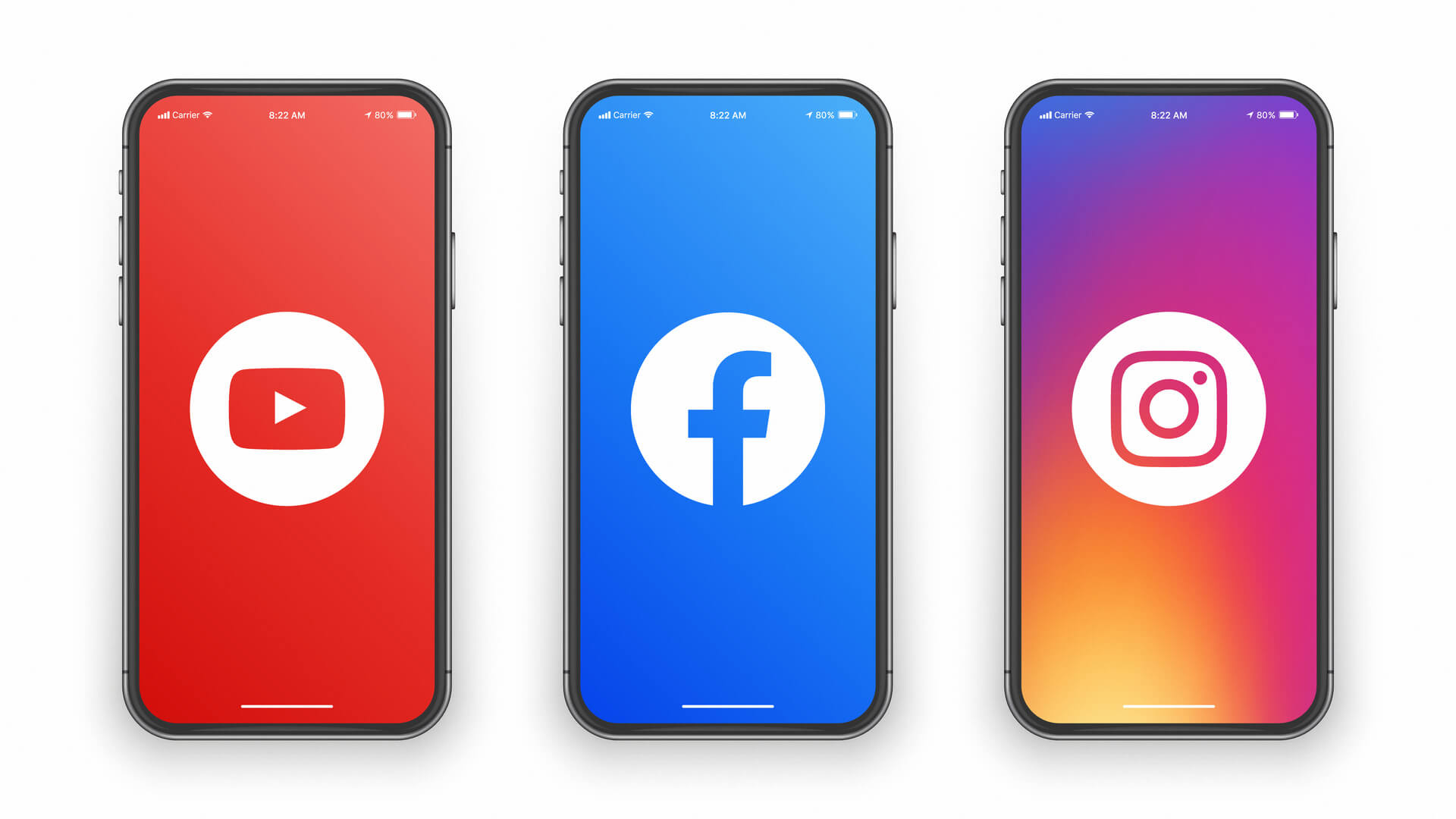How to Choose Between YouTube and Facebook for Video Ad Campaigns?
What happens when millions of bored people are stuck at home due to coronavirus lockdowns? One result is a boom in streaming services. Indeed, there’s never been a better time to consider video advertising.
Business sectors like e-commerce, health and fitness, home entertainment, home decor and remodeling, and online education are booming. Business and finance news sites are surging. And millions of new day traders are crowding into trading and investing apps that are easy to learn.
Marketers already know how important video ads can be for any brand’s marketing strategy. They have one of the highest conversion rates when it comes to reaching potential customers. Two of the most popular places for brands to run video ads are Facebook and YouTube.
Many marketers wonder which of these two platforms is the best for their brand. Which one will give the best return on investment? This article will weigh the pros and cons of running video ads on Facebook vs YouTube to help marketers decide which is best for their needs.
What Are Video Ads?
Video ads can appear in numerous places online including on social media and within streaming content. Brands are using video ads more now than ever before, as many marketers are discovering that video is one of the best ways to engage with potential and current clients.
Video ads can be different from television commercials. Many brands are making longer videos, which is only really possible on the internet. For example, more useful “how to” content that is only implicitly advertising is popular as opposed. Brands are also attempting to be more innovative in their online video ads, as consumers expect this online.
Types of Video Ads
There are several types of video ads, and the types can vary based on whether the ad is used in social media or streaming content.
Types of Social Media Video Ads
When used in social media, video ads can be placed within the main content or to the side. They can show up when users are scrolling or can remain static outside of the content. There are advantages and disadvantages to both of these placements. Users are more likely to notice an ad if it’s in their feed, but if it’s static, it’s in their frame longer.
Video ads in social media can also be played in three ways. First, they can require the user to click a play button. Second, they can autoplay as soon as the video player rolls onto the screen. And third, they can play if the user hovers a mouse over the player.
Types of Streaming Video Ads
In streaming video, ads can occur at several locations within the video. Some ads occur before the main media, while others come at the end. There are also video ads that are interspersed throughout the media, much like television commercials.
In certain streaming situations, ads can also stand alone from the main content. These ads may be on display elsewhere on the screen or on top of the main media. Users will have to click on these ads to view them.
Streaming video ads also have the option for skippable and non-skippable. With a skippable ad, the user can dismiss it after watching a set amount of time. Non-skippable ads must be watched, but are usually short — 15 seconds or less.
Pros and Cons of Facebook
With over 2.7 billion users, Facebook is a place where you can get your brand seen. Many users log on several times a day, giving you increased chances of visibility. There are a few ways you can go about setting up a Facebook marketing campaign.
Types of Facebook Video Ads
Facebook offers three types of video ads: (1) in-stream, (2) feed, and (3) stories. In-stream ads show during a video someone watches on Facebook. Feed ads show up in users’ news feeds as they’re scrolling. Stories ads are interspersed through other stories as the user progresses from one story to the next.
Pros of Using Facebook Video Ads
One of the advantages of using Facebook ads is just the sheer number of people who are on Facebook. Brands have a greater chance of being seen by as many people as possible. And it is all but certain that your target audience is well represented on Facebook regardless of who they are.
Related to this, Facebook offers marketers more options when it comes to targeting. It’s possible to target ads very narrowly and retarget the same people. By optimizing your video ad strategy, you can also explore resources on platforms like Earthweb.com.
Cons of Using Facebook Video Ads
Facebook’s 2.7 billion users is a sign of the site’s appeal. But that also means that your ads are competing against a lot of other parts of the site for attention. Marketers have to be smart to stand out.
Facebook ads can be expensive. While they only charge if a user views a video, they count anything over three seconds as a view. Additionally, their cost-per-view is generally more expensive than YouTube.
Facebook ads are also a bit more difficult to navigate to make sure you’re reaching your target audience. Experienced marketers can have a lot of success because Facebook offers great control. But those who are new to video advertising may want to start with YouTube, as it’s more beginner-friendly.
There are over a billion hours of video watched each day on YouTube, so there are plenty of opportunities for you to get your brand in front of users. Many people start doing video ad campaigns on YouTube before moving into other platforms because they make it relatively easy to set up video ads.
Types of YouTube Video Ads
YouTube offers a good selection of video ad options. Display ads show up in the search results as an option when users are choosing a video. Within a video, there are bumper ads that users are required to watch before their video. There are also skippable and non-skippable ads and overlay ads that are shown over a video.
Pros of Using YouTube Video Ads
YouTube also has over 2 billion monthly logged-in users, meaning that brands have an extensive reach on the platform. Users can spend quite a bit of time on YouTube, meaning there are more opportunities to see ads.
Advertising on YouTube can be relatively cheap. The platform doesn’t charge for the first 30 seconds (or the length of the ad), so an ad only costs if a user chooses to watch it.
YouTube ads are targeted in conjunction with a user’s Google searches. This feature can potentially provide more data for narrow targeting.
Cons of Using YouTube Video Ads
As with Facebook, your video ads have a lot of competition for attention. It can be especially difficult to stand out in this crowd. Marketers have to work hard to differentiate their brand from others.
Historically, YouTube didn’t allow as much customization as Facebook. This is mostly untrue anymore. Marketers can now put calls to action on videos, for example. But there may be small things you want that do that YouTube doesn’t allow. Make sure you check first.
There can also be issues with targeting. While you can and should target using videos, YouTube allows its creators to tag their own content, meaning the tags aren’t always accurate.
Final Thoughts
While both Facebook and YouTube have their merits when it comes to video ad campaigns, overall it seems that YouTube is the better choice for people starting out. Video ads are cheaper. The platform is also user-friendly.
Just the same, Facebook has great features for targeting users and good options for ads. If you are experienced with video ads, they are worth considering.
And, of course, if you know your potential customers are primarily on one platform or the other, you really have no choice. You need to go where your customers are.








